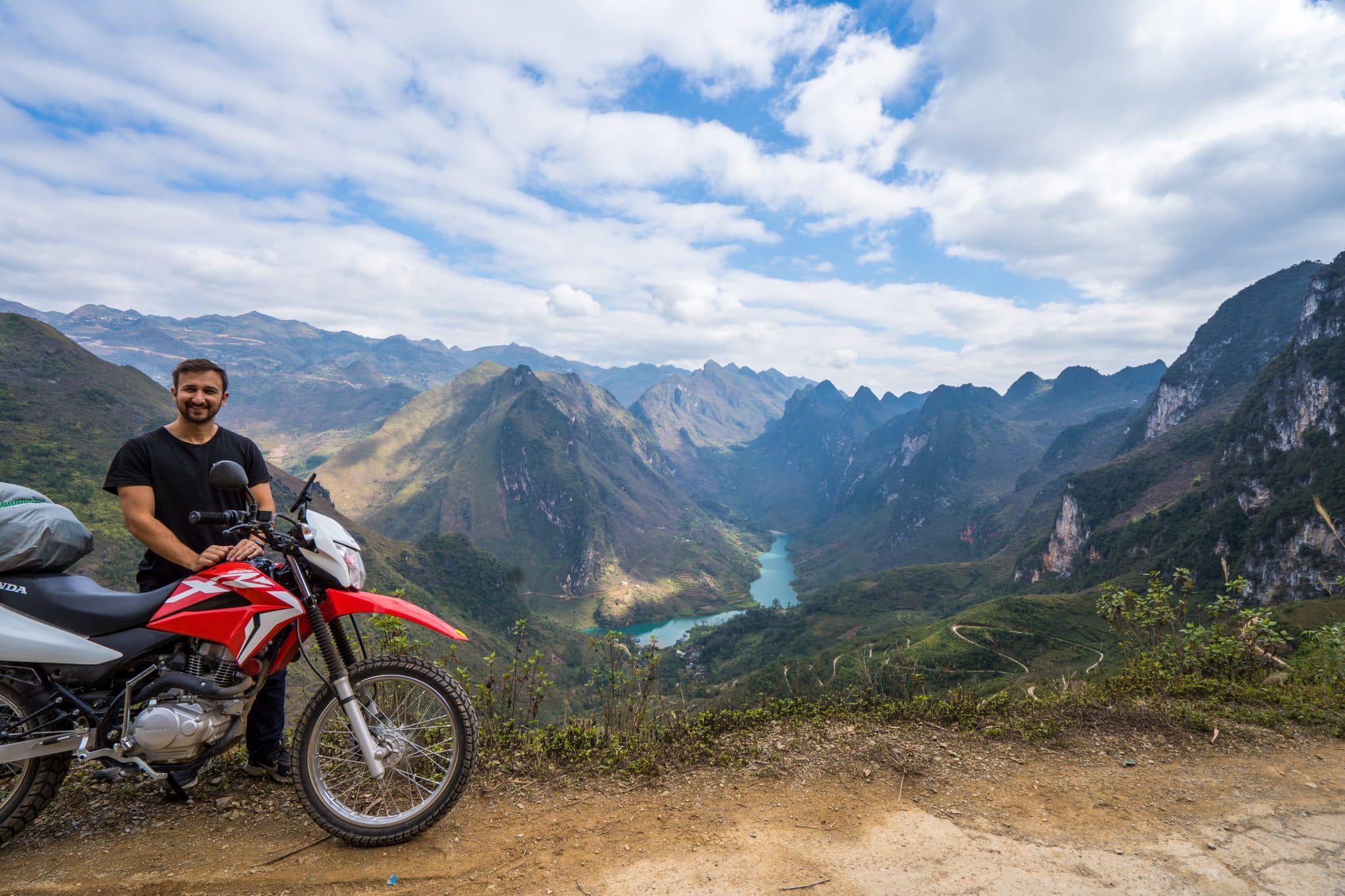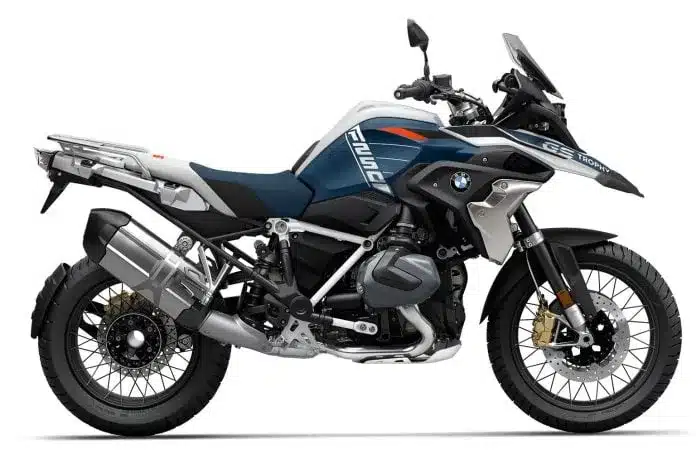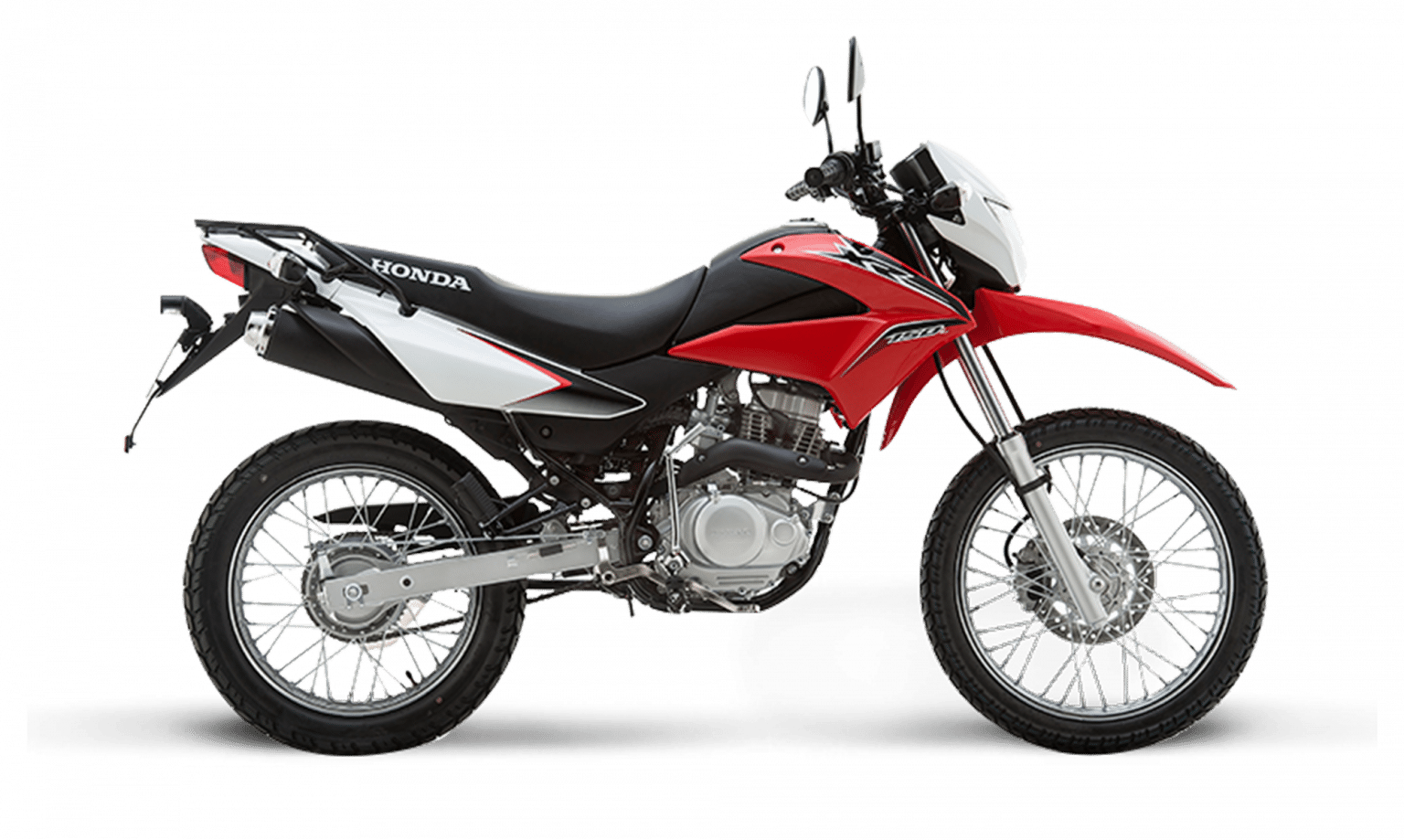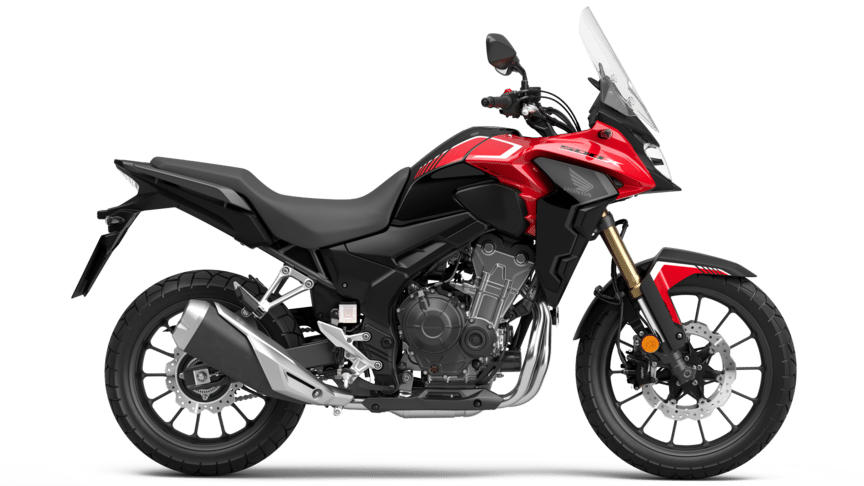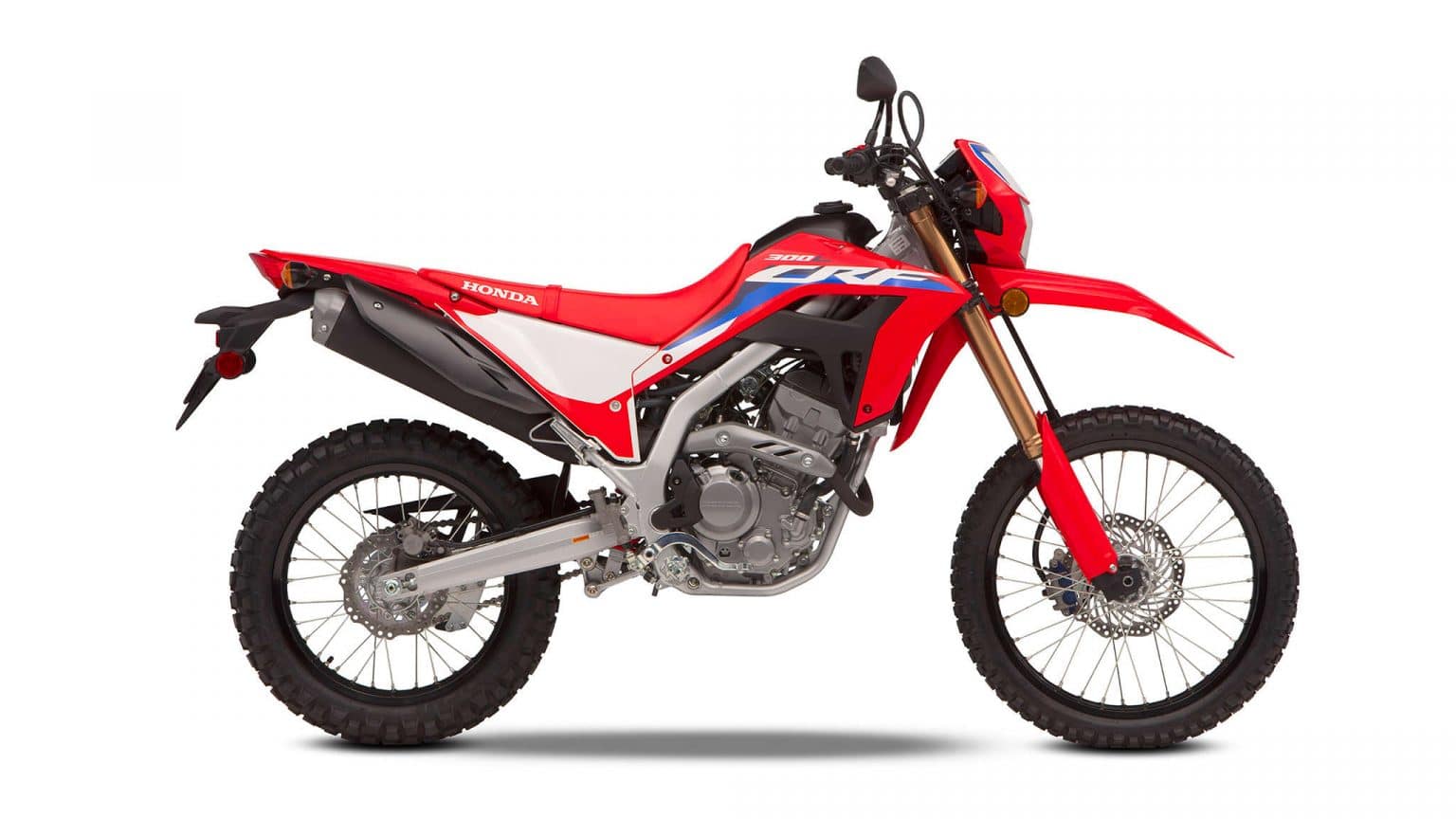Sa Pa and Ha Giang are two big names that anyone considering a trip to Vietnam will certainly hear about. Therefore, lots of people wish to visit both areas but are unsure of the possible routes.
Sa Pa is a former french colonial hill station and outpost and Ha Giang is the spectacularly mountainous northernmost province of Vietnam.
Sa Pa
This was a very sleepy hill town until tourism hit in the early 2000s. Now, it has mushroomed and offers a huge range of hotels and activities for everyone. Rentabike Vietnam offers a tour that passes through Sa Pa. You can see more here in our ‘Historic Northwest’ or our ‘Great Loop’ Tour
Ha Giang
Ha Giang has boomed over the last 5 years and is now very popular with tourists wishing to ‘do the loop’. You should try to get onto the smaller less-crowded roads if you wish to get a real feel for the area. It is one of the destinations on our ‘Great Loop’ Tour and our sister company ADVOutriders also visit the province on their Ha Giang Loop Tour.

Route Map
This is just a few of the possible routes between Sa Pa and Ha Giang.
Sa Pa to Ha Giang Route Choice.
You can drive from Sa Pa to Ha Giang in one day. It is a long day and boring. It seems like an unnecessary thing to do and much better to take a couple of days to do this. Driving for 230km in Vietnam is quite a long day and if you are with a pillion, two up, it is tiring. Not to mention the fact that you will miss out on two areas that I think are overlooked and underrated.
With good weather the Bac Ha and Hoang Su Phi areas are stunning and easily rival Sa Pa and Ha Giang. What is more there are very few tourists so, even though it may be tougher travelling, you get to see more fo the real Vietnam.
I suggest splitting it up into a 2 or 3-day drive. Your key towns on route are: Bac Ha and Hoang Su Phi. It is very important to note that when I refer to Sa Pa, Bac Ha and Ha Giang I mean the towns/cities and Hoang Su Phi refers to the general area, which is quite large.
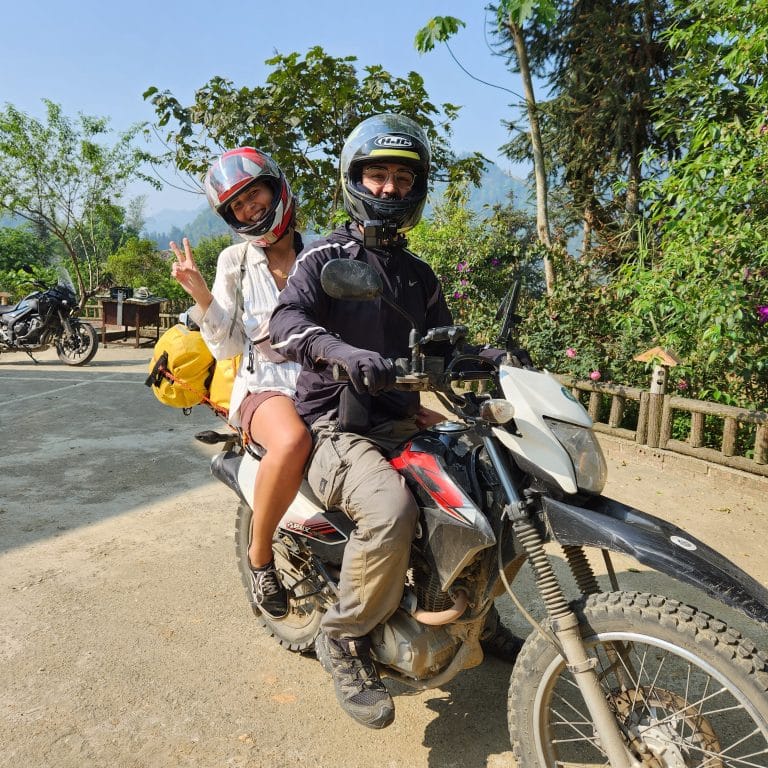
3 Day Route from Sa Pa to Ha Giang
Day 1 – Sa Pa to Bac Ha – between 90-170km
Day 2 – Bac Ha to Hoang Su Phi – between 110-130km
Day 3 – Hoang Su Phi to Ha Giang – between 80-120km
You may snigger and say, ‘Why such short days?’ Well, the idea is to stop on the way and have fun, and allow for punctures or problems, rather than simply drive all day. Of course, you can choose to make this a 2-day trip, or even a 1-day trip. It’s up to you and I have added in the Direct Route just for that reason.
Direct Route
This route is 230km on main roads and it will take a full day. Yes, some of it is scenic, but you will basically be blasting your way through the countryside in order to get to your destination. You might take this route if you were short on time and needed to get to Ha Giang toute suite.
We do not recommend this as we feel it defeats the purpose of you being on a road trip in Vietnam. You miss so much.
Day 1 - Sa Pa to Bac Ha
This corner of Lao Cai is teeming with markets; there is one or more on every day of the week. They are real ethnic markets and, with the exception of Bac Ha market, are not very touristy at all.
Here we offer you 4 choices of route that you can take depending on your circumstances.
Direct route 90km
This will take you down the main road to Lao Cai, QL4D (very busy with cars and buses) and then along the AH14 (also busy) before turning onto the DT153 (quieter and much more scenic).
Sa Pa Valley Back Route 95km
This routes you down the back road into the Sa Pa valley and to Pho Lu (quieter and more rugged, but easy to drive) then on the QL4E (quite large and dull) to Bac Ngam and finally up the DT153 (scenic).
Coc Ly Market Route 120km
For this, it is down the main road to Lao Cai QL4D (busy) and then you follow this out of Lao Cai, past Hekou border gate with China and up to Lung Vai Market. The DT154 will wind its way around to Coc Ly and it has some amazing views of the Chay River below. From Coc Ly there are plenty of fun little routes that take you up to Bac Ha or the DT153.
The Si Ma Cai Route 170km
You need time for this route but it is worth it so long as the skies are clear. Follow the QL4D down to Lao Cai and then up to Lung Vai, but you keep heading North further into Muong Khuong District. You skirt the border with China and you can head up to a couple of the border crossings. The road is good and very fast in parts, very winding and interesting. You can turn onto the tiny roads around Sin Cheng and take these down to Bac Ha, if you have time. This would be a great route to take.
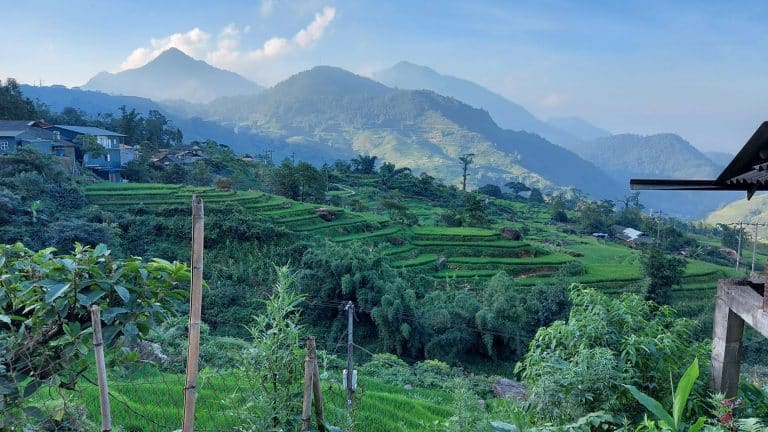
Day 2 - Bac Ha to Hoang Su Phi
All of this area is really worth spending time in. There are beautiful roads, views, waterfalls and tracks. Too many people pass by and miss out.
The QL279 Route
This route takes you on the Nghia Do Tan Tien Rd which is an absolute beauty. There are some great stretches on it and great views. You will pass through some very out-of-the-way places. Then, you hit the 279 at Nghia Do which is a little market town and head East on this to Tan Trinh. From Tan Trinh you take the road north up to the dam construction and on to Thong Nguyen. There are lots of choices of homestays/resorts/retreats in this area and they are not as cheap as other places. Be warned.
The Xin Man / Deo Gio (windy pass) Route
You can take the DT153 North out of Bac Ha and through Lung Phinh on your way to Xin Man (or Coc Pai, same place). This is very easy winding scenic road. Xin Man is quite large but sleepy. It is hard to get food outside of regular eating times. Then you can take the DT178 to Thac Tien which is worth the walk down to it for good photos. You turn onto the Quang Nguyen Rd and wind your way up and down to Ho Thau. You can stay there or you can continue on to Vinh Quang or Thong Nguyen.
The Xin Man / Vinh Quang Route
This route is the easiest and smoothest of the three but as you might expect it is the dullest. The road is good with only a few landslides and plenty of waterfalls to have a dip in. It takes you out of Bac Ha past Lung Phinh and then Xin Man but continues directly to Vinh Quang. That is where you have the choice to head up the hill to Ban Luoc (a more difficult route, not marked)and then Ho Thau or to follow the DT177 for a way and then choose either the 197b up to Nam Son and Ho Thau or the road to Thong Nguyen.
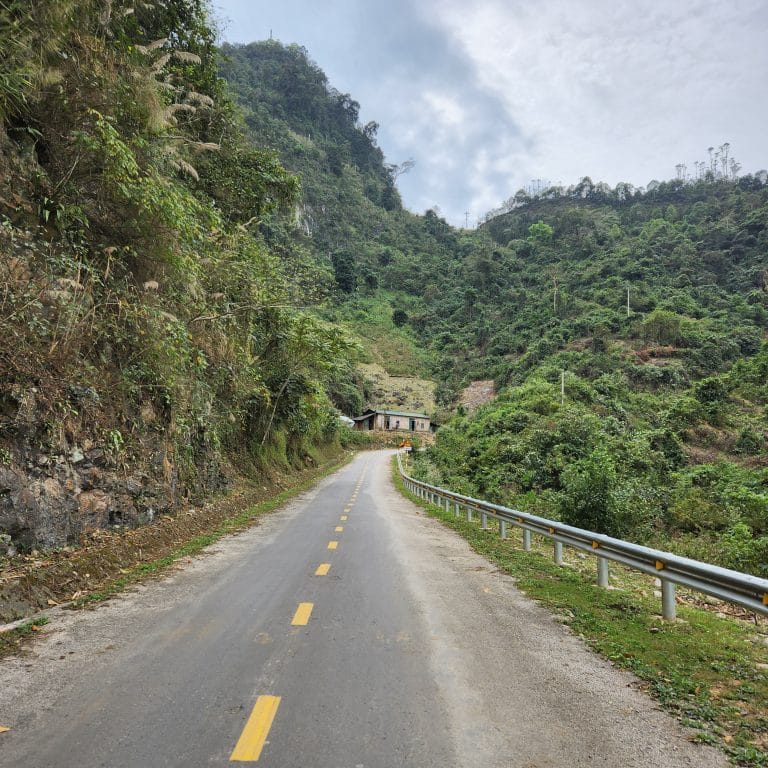
Day 3 - Hoang Su Phi to Ha Giang
The first part of this trip is plagued by road works no matter which route you take. After, that you ride on main highway to get to Ha Giang. There are side roads that you can easily explore, if you have time and they are easy to see on Google.
Direct Route
This will route you on the main road to Tan Quang and then the highway up to ha Giang city. The DT177 is being rebuilt, 2024, and is dusty or muddy and has plenty of construction vehicles on it. The QL2 from Tan Quang to Ha Giang is a main road and quite dull. However, this route will get you to Ha Giang quickly. If you wish to spend the morning in Hoang Su Phi and the afternoon driving to Ha Giang, it could work out for you.
Tan Trinh Market Route
The Tan Trinh route will add about 25km to your journey. This takes you on the back road down to the QL279 which you then take to the QL2 at Tan Quang. This back road has some construction at the northern end near Thong Nguyen where they are building a dam. Further down it is a small winding road that is very scenic. The QL279 and QL2 are main roads and are not very interesting.
Thuong Son Route
A much longer route that takes you up some smaller winding roads to Vinh Quang and then down the Thuong Son road which is also being rebuilt in part. It is a bit bumpy and it is best to use an off road bike like an XR or CRF but the ride is good and it has some great views.
The Best Choice of Bike
The driving around Lao Cai and Ha Giang province is not difficult or rugged if you stay on the QL or DT roads. If you venture off-road, it can get quite tricky, quite quickly. Any bike that is good for a long-distance trip should be fine on the QLs and DTs. You will probably be driving around 120- 150 km per day so a bike with good range and that is comfortable is a good idea.
If you are driving from Hanoi, on part of a longer tour or arriving from Ha Giang Province, then you will need a bigger touring bike, for sure.
Our opinion is that the two best options for economy and ease of driving are the Honda Future and the Honda XR150. It depends on your budget and whether you wish to drive a semi-auto or manual.
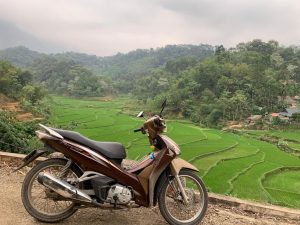
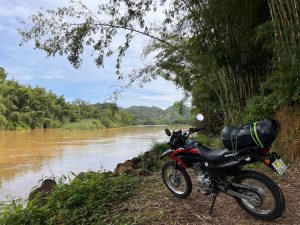
A Word on Licensing
To drive legally in Vietnam you will need to have one of the following combinations of license and IDP.
- A license from your home country plus a 1968 IDP from your home country.
- A license from an ASEAN country plus a 1968 IDP issued by that country.
- A vietnamese license – only issued for those residing in Vietnam for more than 3 months.
You can see more in our blog on ‘How to drive legally in Vietnam.’
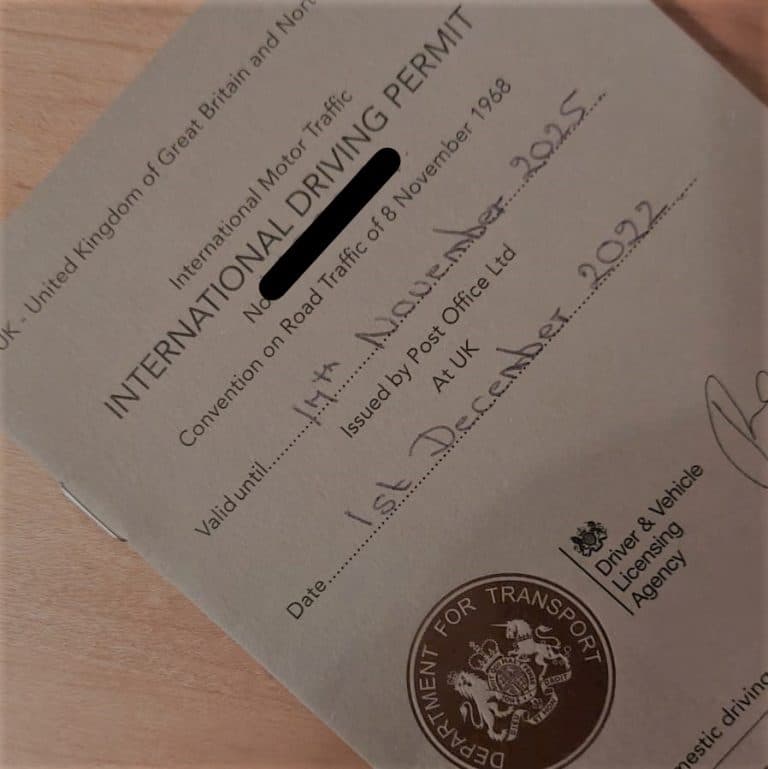
Driving Tips
- Make sure you are driving legally. You can find out how to drive legally in Vietnam here.
- Drive slower than you normally would. The speed limit will be 40 km/h in town and usually 60 /70 kmh out of town. This is because there are lots of hazards on these roads.
- Respect the speed limit. The cops are quite happy to pull over foreigners nowadays and they are happy to fine them, too. Fines can be several million VN Dong so they are worth avoiding.
- If you are riding in a group, rotate the back rider. So, every 5 or 10km have the back rider come up to the front so that no one gets left behind.
- Stay in touch through apps and set regular stops, be them 1hr or 50+km intervals. This way you should all slow down and group up.
- Don’t get complacent on these quiet roads. There can be large trucks, crazy teens or even a dangerous dog. All of these can cause an accident.
Don’t Drink and Drive. Obviously, this is not a good idea, however, you may be unaware that the legal blood alcohol level in Vietnam is ZERO. So, not even a sniff of booze is allowed.
Other Local Routes
There are hundreds, or thousands of little routes that traverse all over the area. If you are interested in exploring, then you should take a good look at Google Earth and plan a route.
It is impossible for us to tell you which routes are good and which are still open as there are so many and things are changing all the time. Search around and have fun.
When to Visit
Generally speaking, it is best to visit Sa Pa and Ha Giang in the dry season, which is from October to April.
You should also be aware that North Vietnam can get really cold in the winter, from November to February, so be sure to pack several layers of clothes and waterproofs.
Rainy season, which is from May to September in the North of Vietnam, can be wonderful but it is very hot and humid. You will want to avoid the midday heat.
This info on ‘The weather in Hanoi’ will serve you well. Ha Giang and Sa Pa share the same general weather pattern as Hanoi.
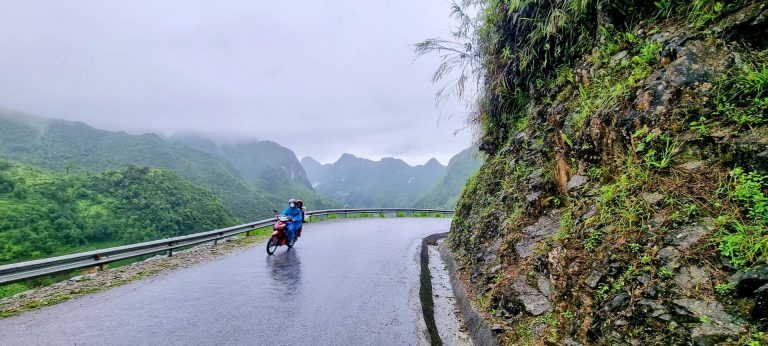
FAQ
Can we drive to Sa Pa / Ha Giang in one day?
The journey to either Sa Pa or Ha Giang from Hanoi is a long one. It can be done in one day, but it is a long day.
We suggest splitting into 2 days and stopping in somewhere like Thac Ba on the way.
Can I rent a bike in Sa Pa and drop off in Ha Giang?
To the best of our knowledge there is currently no service for this at all. This is due to the high cost of returning the vehicle.
Can we drive on CT roads?
Most, but not all, sections of CT road are restricted to large vehicles only. Two-wheeled vehicles are not allowed on these roads. Be careful with Google and remember to use the motorbike setting OR use the ‘no highways’ function to avoid being routed onto these.
Is it easy to find fuel in the area
Yes, as with almost everywhere in Vietnam fuel is easy to find. It is a country of some 50 million motorbikes, 90% of which have 4l fuel tanks. Think about it.
You are usually never far from a fuel station [Petrolimex] or a small roadside vendor selling fuel in plastic bottles.
What is the difference between a QL and a DT road?
QL means Quoc Lo, national highway and is used to indicate roads that Connect 3 or more provincial capitals. DT means Duong Tinh, provincial road and is used to show roads that connect provincial capitals.
This classification does not really mean anything to us. Generally, speaking, the QL are larger and busier and we want to try to stay on the DT unless we need to get somewhere fast.
